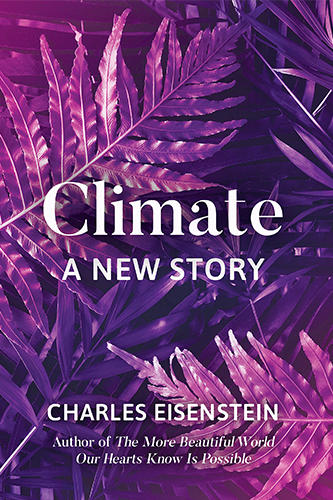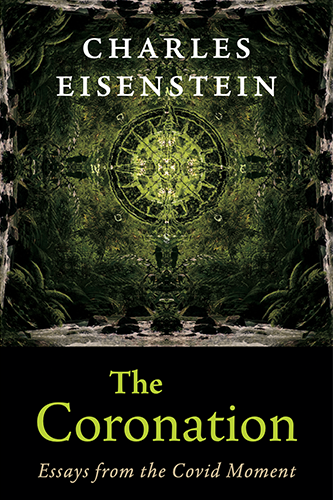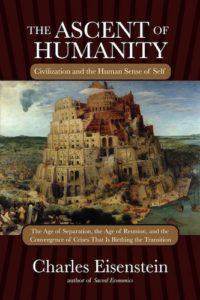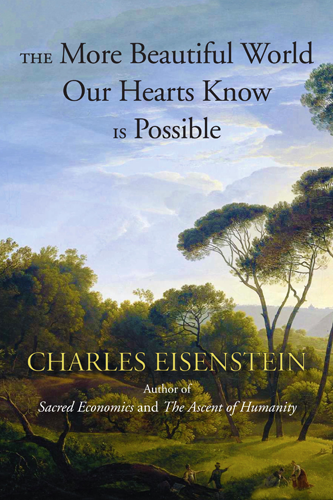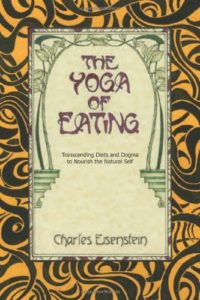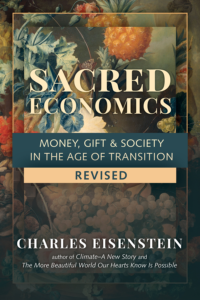The Ascent of Humanity
Chapters
Chapter 4: Money and Property
Spiritual Capital
It is not only the physical and cultural “wild” that has been converted and sold off as property. We have done the same to the wild within ourselves: our imagination, creativity, attention span, playfulness, and spontaneity. I call these things spiritual “capital” because they are indeed productive assets, generators of wealth. In describing their cooptation and conversion into financial capital, I describe how the ascent of humanity has in fact eroded our humanity, made us lesser beings.
It is a process that has been going on for some time, at least since the origin of agriculture. Interestingly, there are allusions to this degeneration of human capacity in several ancient spiritual traditions, particularly Taoism. While perhaps better understood as metaphors for the submerged capacities of childhood, Taoism abounds with references to ancient humans who possessed wisdom and abilities far exceeding those of people today. Similar references exist in ancient stories of the Golden Age in Greek and nearly every other mythology.
In discussing social capital I talked of technology as a means by which activities that people once did for themselves are turned over to paid specialists. We pay others to do for us what we once did for ourselves. Perhaps the most profound aspect of this shift is in a realm that few of us have ever considered as a form of capital: the capacity to imagine and play.
I was fortunate enough to experience childhood just before the age of video games, Nintendo, Gameboy, and the like, and was protected by idealistic parents from at least some of the damage of television. I remember spending hours in my room with my stuffed animals, rock collection, and other toys, weaving elaborate stories about them. To each I would assign a personality, each would become a character in an imaginary world existing either solely in my own head or among siblings and playmates. Today, this creative function of imagining worlds and the characters in them has been taken over by faraway adults in television studios and software development companies who provide children with the ready-made worlds and personalities of TV shows and video games. A capacity of the human mind has been stripped from the individual for profit’s sake.
And what shoddy substitutes these commercially motivated worlds are for the spontaneous creations of the child’s mind! Most of them are worlds of dichotomous good and evil where problems are solved by violence, that are devoid of nuance and detail, and that are disconnected from the rest of the world. Worse yet, they are (unlike the mind of a child) finite, limited by the medium of the story. They therefore constrain the freedom of the child’s mind to develop and play out various elements of the unconscious.
If childhood play is practice for life, then our television raises children to be passive consumers of it. As for video games, they condition us to the mindless acquisition of meaningless rewards (points), to the destruction of generic enemies, and to accepting choices defined by remote others, the programmers of our lives.
The kind of adult that results from a childhood bereft of the opportunity for spontaneous self-directed world-making is someone who will continue to be vulnerable to stories created by others. Not only will he always be in the market for entertainment, but he will be easily manipulable by politicians and advertisers seeking to profit from the acceptance of a certain story. Such adults will be compliant subjects rather than active citizens, for they will have had no practice in creating a world for themselves. They will be content with meaningless choices contained in a box. They will be passive, determined by the forces around them much as Newtonian massive bodies move according to the deterministic forces of physics. The economics implicit in our Newtonian world-view have conspired to create human beings whose lack of autonomy and free will confirms the mechanistic conception of dead matter moved by impersonal forces. Our cosmology has been projected onto ourselves.
Meaningless choices contained in a box. Can you think of a more apt description of a video game or television?
While we speak of children “playing” with their video games, these are not so much the objects of play as they are substitutes for play, and they are merely one small aspect of the disappearance of play from our culture. Play is properly a creative activity: Give a child some blocks and they become trucks, a city, a forest, a zoo. Put a few children together and they create worlds of the imagination that incorporate whatever materials are available, both physical and cultural. The play worlds that children create, that together constitute the Kingdom of Childhood, are practice for the creative work of the empowered adult fashioning a good life and contributing to a beautiful world. We are meant to be creative beings, not just to live out the lives that are handed to us. Joseph Chilton Pearce has written, “As a child, reality is whatever one makes of it.”[28] This is potentially true for adults as well, but unlikely if we have never experienced it as children.
Unfortunately, the types of toys and activities we provide our children give them little liberty to construct their own kingdoms. Childhood has become a process of breaking the human spirit so that we are indeed content to live the lives that are offered us by the modern economy; or, if not content, unable to imagine anything else; or, if able to imagine, disbelieving of our ability to create a different life. Modern life therefore leaves us numb, defeated, or hopeless. How has this happened?
First, in the last fifty years the number and variety of toys available to children has proliferated into piles and piles of plastic junk, making it less necessary for them to apply their imagination and creativity to turn ordinary things of the world into toys. Joseph Chilton Pearce observes, “When today’s toddler sees her mother making cookies and wants to take part, she need not resort to jar top, stick, and mud, like some primitive. She probably has a complete miniature kitchen, scale-model perfect with battery operated appliances.”[29] Imagination is less necessary.
Even worse, today’s toys are not passive objects of play that can only come to life in the child’s mind; they are animated by electronics. The “toy” takes charge and the child assumes a passive role. In most video games the child does not create the story, but instead moves through a story that has been created for her. (Ah, how like modern adult life!) If there is room for exploration, as there is in the Pokémon Gameboy, it is still—unlike the real world—finite and programmed. The world is finite and its limits have been set by someone else. The only mysteries are those that have been fabricated and doled out.
I remember as a boy spending hours and hours with my globe, tracing the mountain ranges with my finger, connecting the oceans, making up stories about the different countries, comparing sizes and latitudes. Today’s toy globes come complete with computer chips and voice recordings that turn the child into a passive absorber of “information”. Advertising and packaging for the profusion of computer-enabled devices on the market today trumpet them as “educational”, as if education were the acquisition of facts. It would seem that for children today, a toy cannot be fun if it doesn’t “do” anything. A toy that just sits there and depends on the child to do something to it is boring.
But what has actually happened is that the child’s imagination has withered. Children who never had toys that do the play for them are rarely bored. Boredom is actually a kind of a withdrawal symptom from the addiction to the ever-intensifying sensual stimulation provided by today’s electronic toys, games, and media.[30] The TV show is over, I’m bored. Play some Gameboy. I’m sick of that now, I’m bored. Eat some cookies. I’m full now, I’m bored. Moving from one stimulus to another, the mind develops a higher and higher tolerance to stimulation. And so the dosage must increase: video games that are even more exciting, television that is even faster-paced, more dramatic. Thus, movies and television programming have over the last few decades become increasingly fast-paced, the editing faster, the scenes shorter, the special effects more dramatic. Old movies are kind of boring, aren’t they?
Boredom is the beginning of the mind’s healing process. Like any withdrawal symptom, it is painful, but very soon latent, undeveloped abilities of the human mind start to manifest. Without diverging into a long discussion of the benefits of meditation, silence, and solitude in nature, suffice it to say that children and adults alike benefit from situations that provide the raw materials of creativity and models of creativity, but leave the process of creativity up to the individual.
This is also how people learn. The ability to learn constitutes yet another form of spiritual capital that has become grist for the money machine.
Boredom is a defining characteristic of modern society for another reason: It represents a hunger for authentic experience. The consumer economy takes advantage of this hunger by selling us artificial experiences, of greater and greater variety and intensity. Television and video games are attractive because they (temporarily) assuage our hunger for experience; yet at the same time they are a primary contributor to the separation from reality. Because they are more lurid, more dramatic, and louder than real life, real life becomes boring in comparison. The child becomes so adapted to the extreme stimuli of electronic entertainment that he or she loses sensitivity to more subtle sensations. Also, because the barrage of stimuli in electronic entertainment is so rapid, the child’s attention span shrinks to the point where he is incapable of patient, sustained observation. In order to command viewer attention, programmers put a “technical event”—a zoom, frame shift, new object—into television content every few seconds, engaging the neurological orientation response. Also called the “startle effect”, it is subject to habituation and thus requires increasing intensity over time—effects more violent, louder, more dramatic, more shocking. No wonder reality is so boring. Compare today’s bored, jaded teenager with the Piraha described in Chapter Two, who are enthralled watching a boat slowly appear from afar and disappear over the horizon. Today’s commercial entertainment embodies the sell-off of our very wonderment at the slow, subtle processes of nature. What is a chick breaking out of a shell compared to cartoon dramas in which the fate of the universe is at stake every half-hour?
I will never forget a trip I took with my wife and children to the aquarium in Baltimore, Maryland. The place thronged with parents dragging their hyperactive children from one exhibit to another, but most of the children simply weren’t interested in looking at the fish. They’d look for a few seconds and then run off, pulling on their parents’ clothing. Even the sharks failed to hold their attention for very long. Then at one tank I heard a chorus of voices, children’s and adults’, saying something about “Finding Nemo”. Here, finally, was a spark of interest from the children—but it came from a movie. Apparently, one of the fish was identical to a character in a popular children’s movie that takes place in a coral reef. The fish in this story were rendered in life-like 3D animation, and you can bet the events of that movie were far more exciting, far more stimulating, than anything you could see in a fish tank. No wonder the children were bored. Reality is boring.
My aquarium experience illustrates a profound phenomenon: the conversion of experience—that is, life—into a consumer product. This is the ultimate conversion of spiritual to financial capital, because it means that being itself, the experience of living, costs money. Paid specialists, usually strangers working for enormous organizations, create the life we experience. Of course it has not yet come entirely to that extreme, but consider: whereas once children would go out into forest, lake, and field to experience nature, now the experience is packaged and sold to them in the form of an aquarium or nature TV program. By this process, nature is transformed from part of life into a spectacle even as we rely on others to provide our experiences. In yet another realm of life we have become consumers.
The conversion of life into something that is consumed means that we pass through it instead of creating it for ourselves. Early training for such a life is provided by the activities we offer children, which increasingly amount to little more than to go somewhere and look at whatever is provided and listen to whatever is said. Or, we put them through the motions of some prescribed, programmed sequences of actions in imitation of the creative process, converting learning into the following of instructions. A couple years ago I was a driver for a school field trip to a llama farm. The children were not allowed to touch the animals, their feed, or anything else: all they did was look at the llamas and listen to the employee tell them information. None of them asked any questions, for they were not interested. In fact, it took quite an effort on the part of the teachers to keep order and restrain the children’s natural curiosity and desire to explore. They might as well have been watching a program about llamas on television, though I suppose they at least got to smell them.
Our town has a children’s parade every year, but the children are not in charge of the parade. They merely walk through it, carrying cardboard animals on poles or dressed in costumes created by someone else.
I have witnessed “crafts” that children are trotted through at Sunday school and day care, which consist of children doing as they are told, step by step, sometimes without even understanding what they are doing, and rarely taking any pride in their finished work. Indeed it would be too messy, too chaotic, to let the children loose with the raw materials of creativity. Of course, creativity that must be constrained to a controlled area and result in a predetermined product is not creativity at all; it is labor. No wonder the children are so lackadaisical, so unmotivated. They are preparing for an adulthood of following instructions. They are preparing for an adulthood of work, of labor, of being functionaries of the Machine. Your creativity will be constrained to a controlled area and result in a predetermined product. Is that your job description too?
One of the most pernicious manifestations of the control and, therefore, elimination of play has come through organized sports, which started with Little League and extend today into all sports and all age groups. The sandlot, the playground, the neighborhood, and the vacant lot, where children were once free to hammer out their own rules, choose their own teams, and resolve their own disputes, have been replaced by yet another supervised realm where play means going through a prescribed set of motions and where the social interaction is mediated and guided by authority. In a way, the children do not play the game at all: the game plays the children, who are just accessories, placeholders fulfilling functions determined by rules created and enforced by adults. Here play has lost its essential creative nature. I do not know what to call it, but it really is not play any more at all. It is, however, an excellent conditioning method for producing people who look to authority for instructions on how to “play the game”. Have you ever felt like you are, still, one of these “placeholders” fulfilling functions determined and enforced by some unchallengeable authority?
Then, of course, there is school, which plays a crucial role in the loss of all forms of capital: social, cultural, and spiritual. Here again, children progress through a more-or-less preset sequence of steps (the curriculum), their natural desire to explore and create confined to specified times, places, and subjects. They read about the world without experiencing it, reinforcing the notion that knowledge comes from the absorption of information, facts, and data provided by authority, and belittling all the while the very idea that they are competent to really learn for themselves through first-hand observation.
The restrictions we place on children arise out of two related concerns: safety and practicality, both of which boil down to some version of control. It is not as safe to let your children roam the neighborhood or the forest as it is to keep them at home. Prefabricated, programmed “experiences” are safer than real experiences in the world, which is beyond the human realm of predictability and control. Similarly, the education we foist upon our children so that they can learn the skills and gain the credentials necessary for a secure position as a paid specialist also attempts to avoid the inherent uncertainty of life. It makes nature provide instead of trusting nature to provide. It is the old distinction between the agriculturalist working to coax food from the land, and the hunter-gatherer accepting nature’s gifts. In this case, “trusting nature” refers to trusting that the natural fecundity of the child as a creative being will result in survival and even abundance. But there is more, because creativity is risky, as is unfettered exploration of the world. It is safer to keep Junior at home. But why has safety and security seemingly become our society’s highest priority? Just as “homeland security” can and is being used to justify any repressive measure, so also can child safety justify any limitation on children’s freedom to create, explore, and direct their own lives. Really, the emphasis on safety can be seen as a manifestation of survival anxiety, and the assumption that the purpose of life is to survive. From this assumption springs our entire preoccupation with safety as well as the entire technological program to control reality.
How do we keep our children safe? By confining them to a controlled environment where every possible danger has been eliminated. But this essentially takes away the possibility of real experiences, those that haven’t been set up and planned out for them. An experience that is programmed, laid out, all its parameters known by another, is somehow phony, like a public relations pseudo-event. It would seem that we are bent on eliminating risk from life and particularly from childhood. What is risk? It comes from the unknown. Testing the boundaries of our world, which are by definition unknown until we explore them, is inherently a risky activity. Since this is how we learn who we are in relation to the world, the regime of safety, confinement, and supervision in effect prevents children from discovering who they are; it keeps them, that is, from self-realization.
Our controlling of children reflects in two ways the technological program to control nature. First, it implements upon our children the program of security through control, which stems from the survival anxiety implicit in our scientific paradigms and underlying our social structures. Second, and more striking, is this: Our children are nature; they represent the very thing we are trying to bring under control. Their spontaneity, creativity, and playfulness, their unruly nature, is the wild that we seek to conquer or, to use less inflammatory language, that we seek to mold into the “responsible”, “mature” domesticated adult, someone whose behavior rarely sacrifices the rational self-interest of safety, comfort, and security (embodied to a large degree in money) for the creative risks of the unknown. In precise parallel, we use science to subordinate the unknown universe to human understanding, and we use technology to domesticate the world. The motivations for doing so are identical to those we try to foster in the mature adult: safety, security, and predictability.
The subjugation of children to a safe, controlled, programmed semblance of life does not end with high school graduation. By the time we reach adulthood we have become so conditioned to be consumers of a life prepared for us by anonymous others, and so helpless and fearful of creating our own, that we remain forever dependent on fabricated experiences. Another word for experiences fabricated by others is entertainment. In the absence of these, having lost or never developed the capacity for autonomous creativity, we experience the discomfort we call boredom.
In my earlier discussion of anxiety theory, I related boredom to Stephen Buhner’s “interior wound” of separation from nature, a hole in the heart so painful that we constantly crave distraction, entertainment, something to take us away from the pain. At the same time, we try to fill in the hole by acquiring more and more possessions, whether tangible or intangible: a futile attempt to fill up the void inside by adding more to the outside. In the context of the loss of spiritual capital, this hole in the heart is nothing less than life itself, our own life, the life we could create for ourselves but that has been sold off to the demands of technological society.
The globe of my childhood was already a step away from real life, the open-ended infinite that is nature, the real world. Already, what I was exploring was a manufactured representation of the world. At least, though, my experience within the confines of that representation was unprogrammed. Through my imaginings, I still played with that globe. It did not play me, turn me into its operator, the button-pusher that moves the game from start to finish.
Like a child moving through his lessons at school, making his way through the prescribed body of information that constitutes an “education,” like a bunch of confused six-year-olds trying to follow the instructions of their t-ball coach, so do we move through modern life. We go through the steps of a life prepared for us by others, a life that is not our own. As the final step in the conversion of the whole world into money, we are selling off our very lives.
What is important here is not so much money but control. The destruction of the human spirit, accomplished mostly during childhood and maintained to the grave, is another aspect of the taming of the wild, the conquest of nature, the fulfillment of the technological and scientific program at the level of the individual. Life, in other words, has been brought under control, or so we would persuade ourselves. Why else the emphasis on safety, security, and practicality? As observed, these boil down to an emphasis on survival, which, in our specialized society, is a function of money. Again, we are selling off our very lives, purchasing experiences instead of creating them, being run by our machines, our schedules, our clocks and our calendars. Time is money.
There are other aspects to the conversion of spiritual capital into money, the diminishment of the human spirit for the sake of profit. Each human being is born as a magnificent, creative, spontaneous spirit, an enormous spiritual being capable of incredible feats of learning. To reduce that spirit to something willing to occupy one of the narrow, meaningless roles in society as we know it, to make that spirit accept the imitation of life today’s world offers (and upon which our economy depends), is an enormous enterprise and a shameful crime. We do not really understand what is happening when, as children and teenagers, vast swaths of our spirit are sold off to the demands of the monetized world. We know only that we have been robbed. Occasionally we meet someone who, by some accident of fate, has survived with a full complement of human abilities intact and we are amazed; we then label that person a genius and dismiss her almost as something not human, and certainly a being in a different category from ourselves. Instead, I urge you to see such people as an indication of your own potential, and a promise of a future in which each person’s unique brilliance contributes to the co-creation of a beautiful world. For while such potential can be suppressed, even indefinitely, its spark can never go out. It is in you and in me. How we may get it back will be the subject of much of the latter half of this book.
[28] Pearce, Joseph Chilton, Evolution’s End
[29] Id.
[30] To experience the mind’s craving for constant stimulus, try standing in a supermarket checkout line without allowing your attention to skip to various tabloid headlines, magazines, products, and other pictures and text. It isn’t easy.

